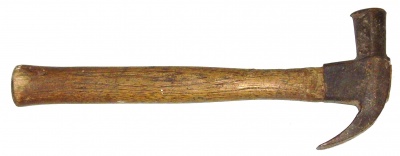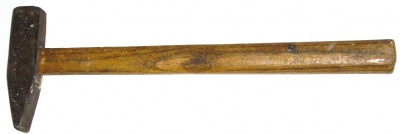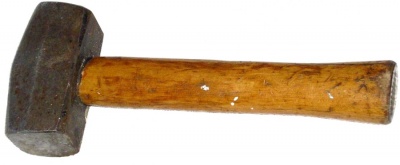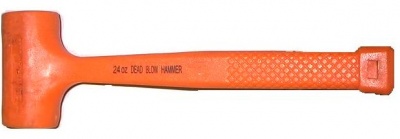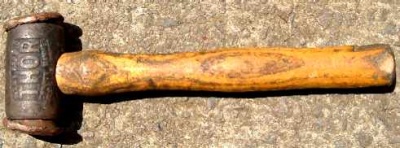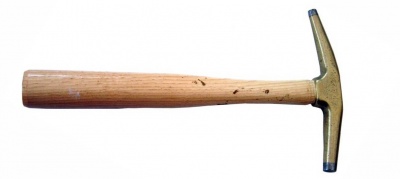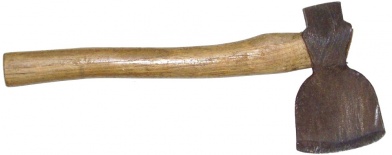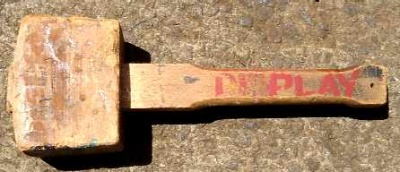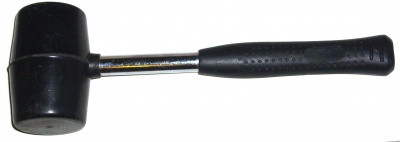Difference between revisions of "Hammer"
(Hardness) |
(→Hardness: m) |
||
| Line 166: | Line 166: | ||
Metals, Brinell hardness: | Metals, Brinell hardness: | ||
*600-700 Hardened Tool Steel | *600-700 Hardened Tool Steel | ||
| + | *279 Soft steel | ||
*150-190 Nickel Aluminum Bronze (Alloy #958) | *150-190 Nickel Aluminum Bronze (Alloy #958) | ||
| + | *134 Malleable iron | ||
*100 Yellow Brass | *100 Yellow Brass | ||
| − | |||
| − | |||
*70 Aluminium | *70 Aluminium | ||
*40-50 Copper | *40-50 Copper | ||
Revision as of 08:29, 23 November 2014
Picking the right hammer makes work easier.
Hammers
Claw Hammer
- Most popular hammer for DIY
- General purpose hammer
- Nail pulling claws on one side
- Various weights, with 12oz - 16oz being most popular
Cross Pein Hammer
- One flat face, one cold chisel face
- Lighter hammer, 4oz & 8oz typical weights
- For driving pins & small nails
- Easier to use & more precise than a claw hammer
- Limited hitting force available
Ball Pein Hammer
- One rounded striking face, one flat
- For metalwork
- also known as engineer's or machinist's hammer
- The rounded face is used for shaping sheet metal
Club Hammer
- Fairly heavy hammer
- 2 flat faces
- 1kg & 4lb are common sizes
- also known as a lump hammer, or baby sledge
- the weight makes some hammering tasks much easier
Sledge Hammer
- Very heavy hammer
- Long handle for maximum swing
- For serious violence, eg demolition, concrete breaking, splitting trunks with wedges, etc
Dead Blow Hammer
- No rebound
- Hollow head contains shot
- used for car work
- more at Wikipedia
Copper Face Hammer
- Does not produce sparks
- For high flammability situations
- a lot less likely to mark metal surfaces than steel hammers.
Brick Hammer
- 1 flat face, 1 masonry chisel face
- For brickwork
Scutch Hammer
- a development of the brick hammer
- Replaceable toolface
- For brickwork & masonry
- Cuts & dresses bricks
Chipping Hammer
- Spring handle isolates mechanical shock
- Chisel & flat striking faces
- Removes arc welding debris
Drywall Hammer
- Serrated face
- Small blade for cutting board
Fencing Pliers
- Hammer, wire cutter, wire twister, tensioner / puller all in one.
- For wire fencing
Rammer
- Flat head on a pole
- For vertical use
- For compacting bases
- Whacker plates & rollers are a lot more popular for most jobs.
Post Rammer
- For hammering posts in
- Consists of a large hollow tube with a closed top end.
- Placed on the post, its sides prevent it coming off the post in use
Framing Hammer
- Larger claw hammer, heavier & longer
- Gives extra force for framing work
Shingler's Hammer
- Waffle face
- Hatchet type blade for breaking slates
- For roofing
Tack Hammer
- Upholstery hammer
- Small light hammer for tacks & brads
- Magnetised face holds fixings
Rock Pick
- Pointed spike on rear side
- For stonework
Hatchet
- Hammer and small axe in one
- 1-3 lbs
Mallets
Wooden Mallet
- Large rectangular head mallet
- For hammering materials that would be damaged by a metal hammer, eg wooden canes & posts
Carving Mallet
- Round wooden head
- For use with hand carving tools
Rubber Mallet
- Non-bounce rubber head
- Softer than wooden mallets
Plastic Mallet
- Non-porous plastic face
Handles
Hammer handles may be:
- Wood
- Fibreglass
- Steel
- One piece steel construction
Wooden handles are the cheapest, and usually come loose eventually, though it may take decades. They then require fixing with a wedge.
One piece steel hammers have no joint between head and handle, and never come loose. They are the highest cost type of hammer construction.
Handle Replacement
Hammer Safety
A lot of minor injury is caused by hammers hitting fingers. Either keep the taps gentle while fingers are in the way, or use pliers to hold the nail.
A misstrike can send a nail flying. Use safety eyewear. This is important with masonry nails, which are especially prone to missile-like behaviour, Sledge hammers can also impart huge energy to pieces of debris.
Hammers with a damaged head face tend to push nails sideways in use, increasing work times, increasing finger injuries and launching more nail missiles. Replace them.
Hammers have hardened heads, and 2 hammers should never be struck against each other.
Loose heads can be dangerous, and should be repaired with a wedge. A flying head can cause severe injury.
- Wood handled hammers are very prone to loosening in time
- One piece metal hammers are immune to loose heads.
Hardness
Metals, Brinell hardness:
- 600-700 Hardened Tool Steel
- 279 Soft steel
- 150-190 Nickel Aluminum Bronze (Alloy #958)
- 134 Malleable iron
- 100 Yellow Brass
- 70 Aluminium
- 40-50 Copper
- 30-40 Lead
Wood (Values vary significantly, these are only typical)
- 2.6 Birch
- 6.9 Hickory
Plastics, from harder to softer: Gar-Dur Plastic White Nylon BASA Urethane
